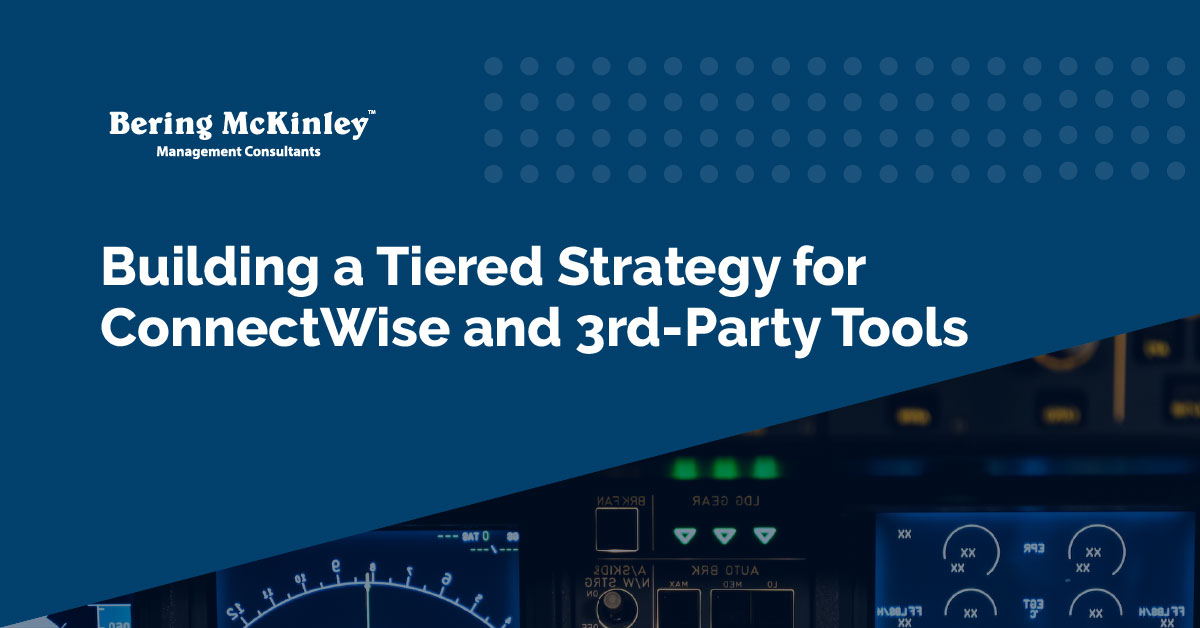Build a Client Portal That Doesn’t Suck: Live Chat, Ticketing & More in ConnectWise
Trying to get ConnectWise to finally work with you instead of against you? You’re not alone. For many MSPs, it’s the digital equivalent of a Swiss...
4 min read
 Josh Peterson
:
Sep 22, 2025 2:00:00 PM
Josh Peterson
:
Sep 22, 2025 2:00:00 PM
%20.jpg)
Ever feel like learning ConnectWise ticketing is like trying to play Tetris with sticky notes, vague instructions, and random tickets your coworker left behind? You’re not alone. For most MSPs, onboarding new techs—or even upskilling seasoned ones—can feel like throwing them into the deep end and hoping they swim. Confusion. Delays. Mistakes. The usual.
But what if training didn’t have to be chaotic? What if your team could practice with real-world ConnectWise scenarios, in a safe environment where they can learn, explore, and even make mistakes without breaking anything?
That’s where tech simulations come in—a training approach that’s not only effective, but (dare we say it?) actually kind of fun.
In this guide, we’ll show you how to use ConnectWise simulations to:
No more throwing new hires into the fire. No more passive, eyes-glazed-over training videos. It’s time to simulate, solve, and succeed—with a hands-on method that meets your techs where they are.
Forget dull manuals and awkward mistakes in front of clients. Simulations turn learning into an interactive, hands-on exercise where techs get to “mess up” without actual risk. But the value goes beyond eliminating mistakes:
With ConnectWise as your mission control, true-to-life simulations are possible for any MSP.
So what separates a dull training exercise from a simulation that actually gets your techs ready for the real deal? It all comes down to credibility and relevance. You want hands-on practice that feels real, not like a canned demo from 2009.
Here’s how to build simulations your team will learn from (and maybe even enjoy).
No one learns from made-up scenarios that look nothing like real life. Use your actual service board structure, common ticket types, and those all-too-familiar hiccups.
Need help setting up ConnectWise right from the start? Check out our blog on Your First 100 Days with ConnectWise: A Complete Setup Roadmap for the foundational setup that makes simulations feel real.
Give techs a taste of the full spectrum:
Mix the mundane with the unexpected—because that’s what real ticket queues do.
This isn’t just about clicking checkboxes. Real environments use ConnectWise Automate for everything from endpoint monitoring to scripted fixes. Simulate ticket outcomes with automation to help techs recognize auto-responses, scripted actions, and what they should do next.
Great ticketing isn’t just about solving the issue—it’s about how you communicate. Your simulation should include:
This builds soft skills and reinforces consistency in client communication—something many techs struggle with.
The simulation isn’t over when the ticket’s closed. Review what went well, what tripped someone up, and how the SOPs held up under pressure. Use it as an opportunity to reinforce process standards and clarify edge cases before they happen in the wild.
Remember: the goal isn’t perfection—it’s building confidence through context.
You might be thinking, “Okay, cool idea—but how do I actually run a simulation that doesn’t feel like a forced HR training video?”
Here’s your roadmap for building ConnectWise tech simulations that feel real, engage your team, and build better habits—without overwhelming your workflow.
Start with a clean slate. Set up a service board just for training, clearly labeling every ticket as “Simulated.” Limit access to your training group so nothing interferes with real client work and no one accidentally dispatches a fake printer outage at 4 p.m. on a Friday.
Ask your seasoned techs:
Use their feedback to build simulations that reflect everyday challenges, not fantasy IT tickets with perfect data.
Field wisdom: “If you sneeze, it’s a ticket.”
That’s the tongue-in-cheek motto at many top-performing MSPs. Logging everything, even fake sneezes, ensures the simulation reflects a true production environment.
Use ConnectWise’s extensive library of ticket and workflow templates for consistent, fast scenario creation. This helps standardize the experience and gives techs exposure to the core templates they’ll use daily.
Layer in automation using ConnectWise Automate or built-in triggers.
This helps techs understand how ConnectWise behaves behind the scenes—and how to react when things move automatically.
Tech skill is one thing. Communication skills are another. Train techs to:
Build these habits during training so they become second nature on live tickets.
Review each completed simulation with your techs. Discuss what worked, what felt realistic, and where habits can be improved. Connect simulation results to ongoing training and performance metrics for continuous improvement.
Let’s be honest: ticket simulations can get stale fast, especially if they feel like busywork. But with a few minor tweaks, you can turn them into something that builds real fundamental skills and keeps your team engaged.
Here’s how to bring your simulations to life:
ConnectWise is constantly evolving, and so are the challenges your techs face. Make tech simulations a living, evolving part of your MSP’s growth, not just a one-off onboarding event. Incorporate new scenarios as systems change, rotate trainers to keep things fresh, and encourage ongoing feedback so every simulation improves.
Need expert help developing simulations or overhauling your ConnectWise training? Bering McKinley specializes in MSP consulting and training that sticks.
Schedule a training strategy call with Bering McKinley today and transform ticketing from a pain point into one of your firm’s competitive advantages.

Trying to get ConnectWise to finally work with you instead of against you? You’re not alone. For many MSPs, it’s the digital equivalent of a Swiss...

Building out integrations for ConnectWise and third-party tools probably wasn’t part of your MSP dream. But here you are, reading this post, wishing...

The Managed Service Provider (MSP) industry is rapidly evolving in 2025. With growing client expectations, increasing competition, and technological...